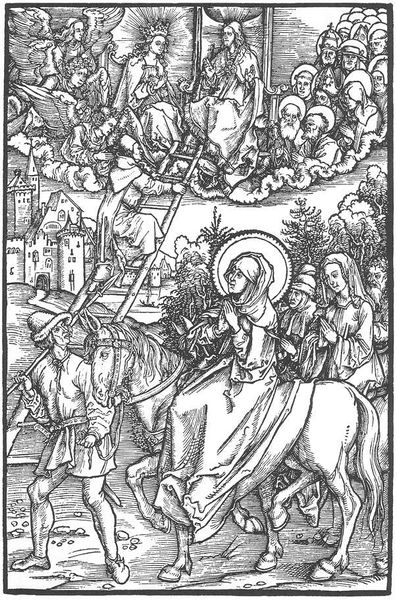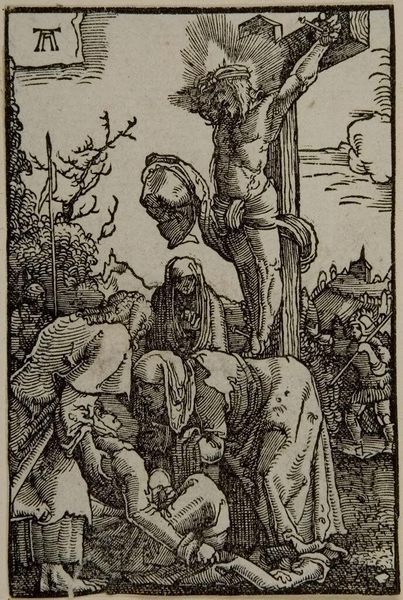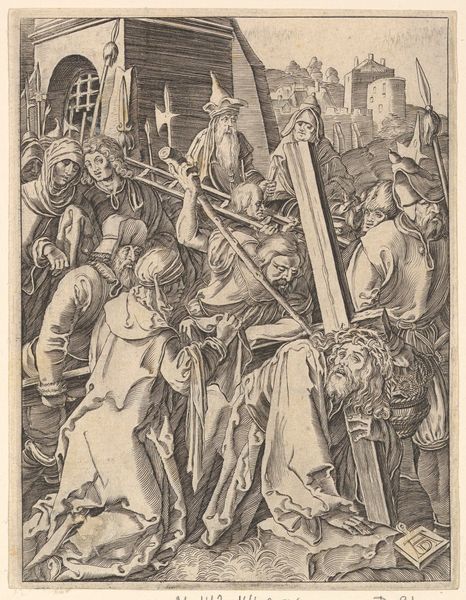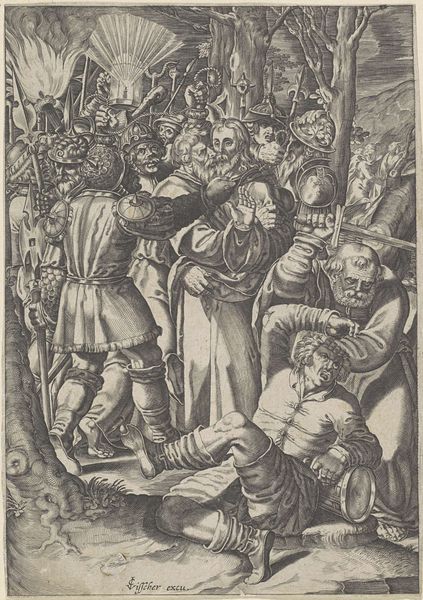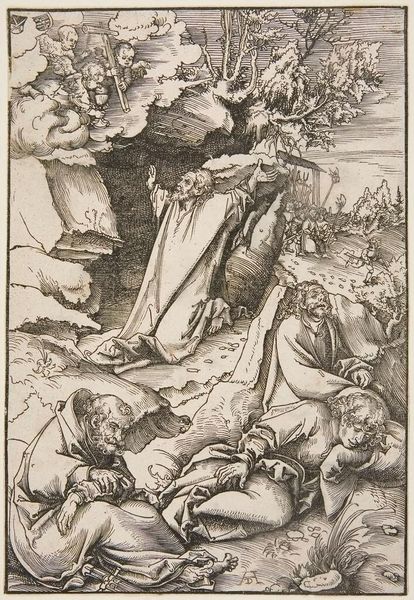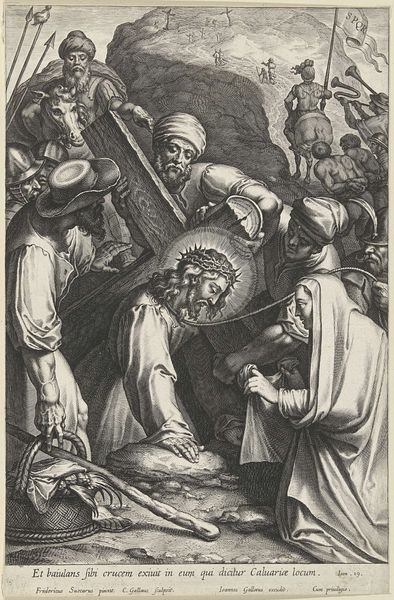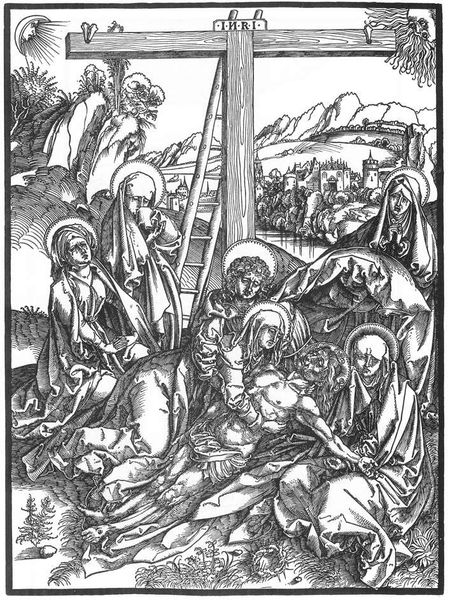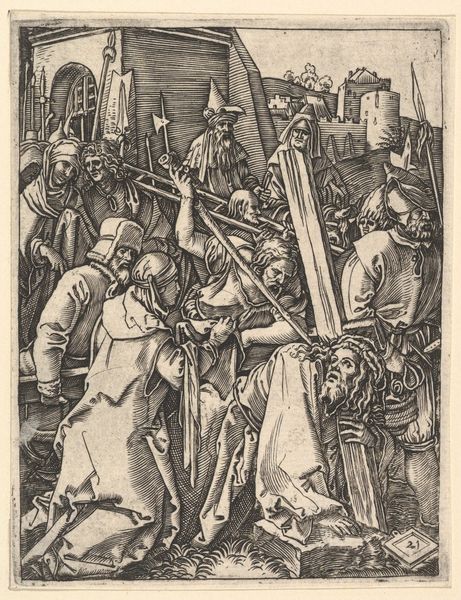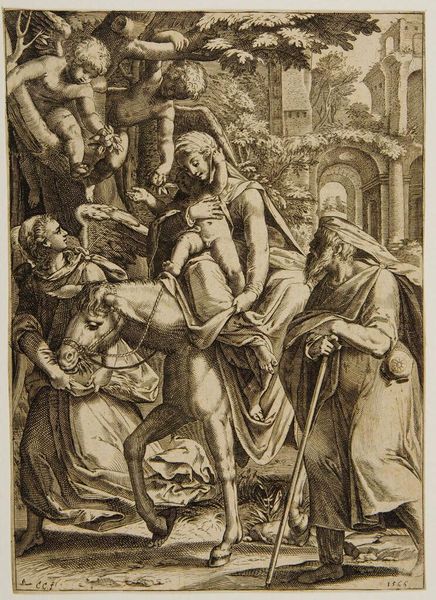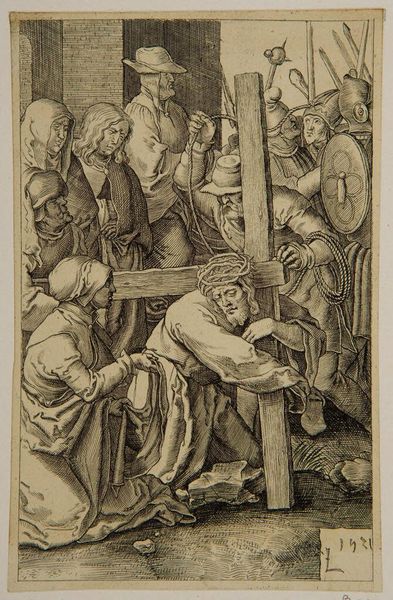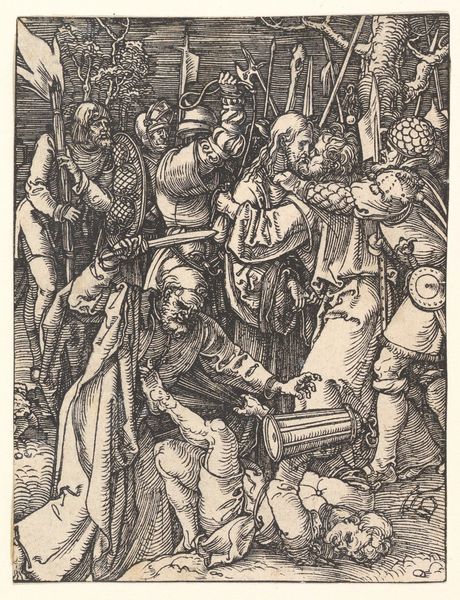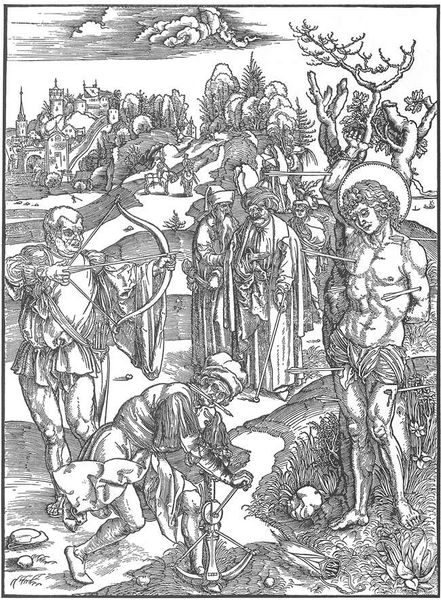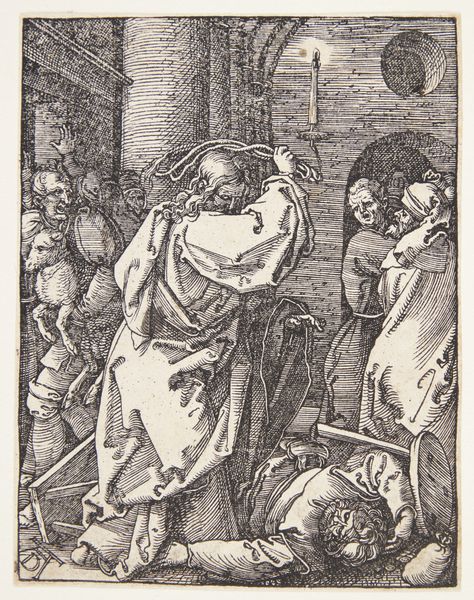
painting, oil-paint
#
painting
#
oil-paint
#
figuration
#
oil painting
#
history-painting
#
early-renaissance
Copyright: Public domain
Curator: Here we see a right-wing panel from the "Passion (Greverade) Altarpiece," created in 1491 by Hans Memling. Immediately, I'm struck by the artist’s use of layered imagery, guiding our eyes from Christ's resurrection to His descent from the cross. Editor: It is visually arresting, isn't it? It almost feels like a scene from a play. So many emotions at once: the agony of loss, the bewilderment of guards, the sheer glory of Christ rising again… It is as if grief, chaos, and triumph converge on one vertical stage. Curator: That's right, Memling invites us to consider the transition from the Old Testament to the New Testament. See the flag that Christ is holding. It represents victory, faith, the emergence into light after a descent into darkness. It mirrors similar imagery, a divine message across time. Editor: Absolutely, but I am also reflecting on the composition and who is left out. In these older narratives of Christian Resurrection, the scene seems designed for an exclusive audience. Those present often serve the purpose of furthering his glorification and the illustration of theological ideas rather than celebrating universal liberation. How many everyday citizens would see their lived experiences mirrored in the figures in this altarpiece? Curator: Your perspective brings important issues to the forefront. Art holds a mirror to society. So while the immediate imagery speaks of victory and new beginnings, that message may not ring true for everyone depicted, or the many outside this frame. Editor: This panel makes me think about our continued efforts to dismantle hierarchies and redefine traditional power dynamics. Art becomes most compelling when it prompts dialogue and re-evaluation, when we challenge the assumptions ingrained within them. Curator: A thought-provoking insight indeed. These visual emblems are open to countless layers of reading through our current social lens. This piece resonates profoundly in its artistic mastery and in the many possibilities of interpreting historical narrative in our contemporary society. Editor: Right, and while these altarpieces often uphold the church's perspective on Christian narratives, viewers can find new meanings as historical, social, and political circumstances shift through the centuries.
Comments
No comments
Be the first to comment and join the conversation on the ultimate creative platform.
